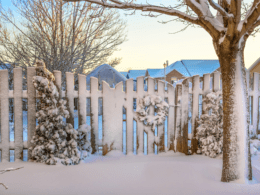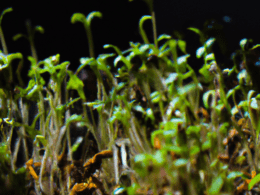Are you wondering how long your potted geraniums will last? Well, we’ve got you covered! In this article, we will explore the lifespan of potted geraniums and provide you with essential tips to ensure their longevity.
By understanding the right growing conditions, fertilizing and pruning techniques, and how to protect your geraniums from pests and diseases, you can keep them healthy and thriving for years to come. We will also discuss overwintering techniques to help you successfully navigate colder months.
Additionally, we will explain the signs of aging and when it’s time to replace your geraniums. And if you’re interested in propagating and starting new plants, we have some handy tips for you too.
So, let’s dive in and learn how to keep your potted geraniums flourishing and beautiful for as long as possible!
Quick Summary
- The lifespan of potted geraniums can vary depending on the care they receive.
- Factors such as overwatering, insufficient light, and pests can affect the lifespan of geraniums.
- Proper care tips include providing 6 hours of direct sunlight, maintaining a temperature of 65-75 degrees Fahrenheit, watering thoroughly but allowing the soil to dry slightly, and regularly inspecting for pests.
- Propagating geraniums through stem cuttings can help rejuvenate aging plants and bring beauty and freshness to the garden.
Understanding the Lifespan of Potted Geraniums
Potted geraniums, with their vibrant blooms and luscious green leaves, have a lifespan that can vary depending on the care they receive. If you provide the right geranium care, these beautiful plants can thrive for several years, bringing joy to your home or garden. However, without proper attention, they may not last as long as you hope.
To ensure the longevity of your potted geraniums, it’s crucial to understand their common problems and how to address them. One of the most common issues is overwatering, which can lead to root rot and the eventual death of the plant. To avoid this, make sure to water your geraniums thoroughly, but allow the soil to dry out slightly between waterings.
Another problem to watch out for is insufficient light. Geraniums need at least six hours of direct sunlight each day to stay healthy. If they don’t receive enough light, they may become leggy, weak, and more susceptible to disease.
In addition to these issues, pests like aphids and spider mites can also threaten the lifespan of your potted geraniums. Regularly inspect your plants and take immediate action if you notice any signs of infestation.
By understanding geranium care and addressing common problems promptly, you can ensure that your potted geraniums thrive and last for many years, providing beauty and enjoyment to your surroundings.
Providing the Right Growing Conditions
To provide the right growing conditions for your potted geraniums, you need to ensure they receive proper sunlight and temperature. Place your geraniums in a spot where they can get at least 6 hours of sunlight a day, and keep the temperature between 65 and 75 degrees Fahrenheit.
Additionally, make sure to water your geraniums adequately and provide good drainage to prevent waterlogged roots.
Proper Sunlight and Temperature
Ensure optimal sunlight and temperature conditions for your potted geraniums to maximize their lifespan. Geraniums require plenty of sunlight to thrive, so place them in a location that receives at least six hours of direct sunlight per day. If you don’t have a spot with enough sunlight, consider using a grow light to supplement their light needs.
Additionally, geraniums prefer a temperature range between 65 and 75 degrees Fahrenheit (18-24 degrees Celsius). Avoid exposing them to extreme temperatures, as it can stress the plants and negatively impact their health. Protect them from cold drafts and keep them away from heaters or air conditioning vents.
By providing the right amount of sunlight and maintaining a moderate temperature, you can ensure the longevity of your potted geraniums.
Adequate Watering and Drainage
Adequate watering and proper drainage are key to keeping your geraniums healthy and flourishing. When it comes to watering techniques, it’s important to strike a balance. Too much water can lead to root rot and other diseases, while too little water can cause your geraniums to wither and die.
To ensure that you’re watering your potted geraniums correctly, check the soil moisture level regularly by sticking your finger about an inch into the soil. If it feels dry, it’s time to water. When watering, make sure to thoroughly saturate the soil until water comes out of the drainage holes. This will help flush out any excess salts or minerals that can accumulate over time.
Speaking of drainage, it’s crucial to have a good drainage system in place. This will prevent water from pooling at the bottom of the pot, which can also lead to root rot. So, make sure your pot has drainage holes and consider placing a layer of gravel or small rocks at the bottom to facilitate proper drainage.
By following these watering and drainage tips, your potted geraniums will thrive and bring beauty to your space for a long time.
Fertilizing and Pruning Tips for Longevity
For longer-lasting potted geraniums, it’s important to regularly fertilize and prune them. By following these simple techniques, you can ensure the longevity of your beautiful plants.
-
Use organic fertilizers: Opt for natural fertilizers that are safe for both your geraniums and the environment. Avoid chemical fertilizers that may pose a risk to your health and the health of your plants.
-
Timing is key: Fertilize your geraniums during their active growing season, which is typically in the spring and summer. This’ll provide them with the necessary nutrients to thrive and stay healthy.
-
Prune with care: Regular pruning helps promote new growth and prevents your geraniums from becoming leggy and unruly. Trim back any dead or diseased leaves and stems, making sure to use clean and sharp pruning tools to prevent the spread of diseases.
-
Don’t overdo it: While fertilizing and pruning are important, it’s crucial not to overdo it. Follow the recommended dosage for fertilizers and prune sparingly to avoid stressing your plants.
By following these fertilizing techniques and pruning methods, you can ensure the safety and longevity of your potted geraniums. Enjoy the beauty and vibrancy of your plants for years to come!
Protecting Geraniums from Pests and Diseases
Keep those pesky pests and diseases at bay, so your geraniums can thrive and remain healthy! Pest prevention is essential for the longevity of potted geraniums. Here are some tips to help you protect your plants from common geranium diseases and pests:
| Pest Prevention | Common Geranium Diseases |
|---|---|
| Remove weeds regularly | Powdery Mildew |
| Inspect plants regularly for signs of pests | Botrytis Blight |
| Avoid overwatering | Leaf Spot |
| Provide adequate air circulation | Aphids |
| Use organic pest control methods | Spider Mites |
To prevent pests, regularly remove weeds from around your geraniums as they can harbor insects. Inspect your plants regularly for signs of pests such as aphids or spider mites. If you notice any infestations, take immediate action to control them using organic pest control methods. Overwatering can lead to fungal diseases like powdery mildew, so be sure to water your geraniums sparingly and provide adequate air circulation. Additionally, avoid getting the leaves wet when watering, as this can promote diseases like botrytis blight and leaf spot. By following these pest prevention methods and being vigilant in monitoring your plants, you can protect your potted geraniums from common diseases and pests, ensuring their longevity and health.
Overwintering Techniques for Potted Geraniums
Ready to learn how to successfully overwinter your potted geraniums? Overwintering techniques are essential for ensuring the survival of your beloved plants during the colder months. Caring for potted geraniums requires a little extra effort, but it’s worth it to protect them from the harsh winter conditions.
First, find a suitable location for your potted geraniums during the winter. Choose a cool, dark area such as a basement or garage. Make sure the temperature stays above freezing but below 50°F (10°C). Avoid placing them near windows or heaters as extreme temperatures can damage the plants.
Before moving your geraniums indoors, give them a good pruning. Remove any dead or damaged leaves, and trim back the stems to about one-third of their original length. This will help the plant conserve energy and promote new growth in the spring.
Next, reduce watering frequency. Water your geraniums sparingly, allowing the soil to dry out slightly between waterings. Too much moisture can lead to root rot and other diseases.
Lastly, monitor for pests and diseases. Inspect your plants regularly for signs of infestation or illness. Treat any issues promptly with organic insecticides or fungicides to prevent them from spreading.
By following these overwintering techniques and caring for your potted geraniums, you can ensure their survival and enjoy their vibrant blooms year after year. Stay vigilant and provide the necessary care, and your geraniums will thrive even during the coldest months.
Do Potted Pansies and Geraniums Have a Similar Lifespan?
Potted pansies and geraniums may have different lifespans. The potted pansies lifespan can range from a few months to a year, depending on how well they are cared for. On the other hand, geraniums generally have a longer lifespan, often lasting multiple years when properly nurtured. It is important to consider these variations before selecting your desired plants for long-term enjoyment.
Signs of Aging and When to Replace your Geraniums
As your geraniums age, you may notice wilting leaves, stunted growth, and decreased blooming, indicating it’s time for replacement. It’s important to keep an eye out for these signs of aging so you can provide the best care for your plants.
One common problem with aging geraniums is a shorter flowering period. As the plant gets older, it may not produce as many vibrant blooms as it used to. This is a natural part of the aging process and can be a sign that it’s time to replace your geraniums.
Another common issue with aging geraniums is stunted growth. If you notice that your plants are not growing as tall or as full as they once did, it might be time to consider replacing them. Stunted growth can be a result of a variety of factors, including nutrient deficiencies and root-bound plants. By replacing your geraniums, you can ensure that they have enough space to grow and thrive.
In addition to wilting leaves, decreased blooming, and stunted growth, there are other common geranium problems that can indicate it’s time for replacement. These include yellowing leaves, pest infestations, and diseases. If you notice any of these issues, it’s best to replace your geraniums to prevent further damage and ensure the safety of your other plants.
By paying attention to the signs of aging and knowing when to replace your geraniums, you can maintain a healthy and vibrant garden. Remember to provide proper care and regular maintenance to keep your plants thriving for as long as possible.
Tips for Propagating and Starting New Plants
Get ready to experience the joy and fulfillment of propagating and starting new plants in your garden – it’s an exciting journey that will bring a sense of accomplishment and connection with nature. If you have potted geraniums that are aging or showing signs of decline, propagating and starting new plants is a great way to rejuvenate your garden. Here are some tips to help you get started:
-
Take stem cuttings: Choose a healthy stem from your geranium plant and cut it just below a leaf node. Make sure the cutting is around 4-6 inches long.
-
Remove lower leaves: Strip off the lower leaves from the stem, leaving only a few at the top.
-
Dip in rooting hormone: Dip the cut end of the stem in rooting hormone to encourage root growth.
-
Plant in well-draining soil: Use a potting mix that drains well to plant your cutting. Make a hole in the soil and gently insert the stem, ensuring that the leaves are above the soil.
-
Provide proper care: Place the potted cutting in a warm and bright location, but avoid direct sunlight. Keep the soil moist but not waterlogged, and mist the leaves occasionally to maintain humidity.
By following these propagating techniques and starting from cuttings, you can grow new geranium plants that will bring beauty and freshness to your garden. Enjoy the journey of nurturing and watching your new plants thrive!
Frequently Asked Questions
Can potted geraniums be grown indoors?
Yes, potted geraniums can be successfully grown indoors. To ensure their well-being, provide them with proper indoor geranium care, including adequate sunlight and the best pots for indoor geraniums.
How often should potted geraniums be watered?
Water your potted geraniums every 5-7 days, or when the top inch of soil feels dry. Overwatering can lead to root rot, so watch out for yellowing leaves and moldy soil.
What are the common pests that attack potted geraniums?
To keep your potted geraniums safe from common pests like aphids and spider mites, regularly inspect the leaves and stems for any signs of infestation. Take immediate action if you spot any pests to protect your plants.
Can potted geraniums survive in cold climates?
Potted geraniums can survive in cold climates with proper winter care. Protect your geraniums by bringing them indoors or covering them with a frost cloth to shield them from freezing temperatures and frost damage.
How long does it take for potted geraniums to bloom?
Potted geraniums typically take 8-10 weeks to bloom, but several factors affect their blooming time. Ensure they receive enough sunlight, water them regularly, and provide proper fertilization to promote healthy blooms.
Conclusion
So, now you know how long potted geraniums can last and how to ensure their longevity.
Remember to provide the right growing conditions, fertilize and prune regularly, and protect them from pests and diseases. Don’t forget to use overwintering techniques to keep your geraniums thriving even in colder months.
Keep an eye out for signs of aging and replace your geraniums when necessary. And if you want to start new plants, follow the tips for propagating and enjoy the beauty of geraniums for years to come!








